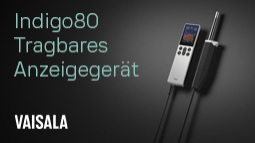Fabs fight the neverending war on contamination
By Sarah Fister Gale
In the wafer fab, no matter how hard you fight, there are some battles you?ll never win. The best you can do is stave off your enemy?molecular contamination?for as long as possible.
Since the beginning of wafer manufacturing, cleanroom operators have waged war on contaminants, relying on a growing collection of filters, monitors, and enclosed environments to prevent particles from crushing their yields. But for every step forward they take in contamination control, the industry takes two steps back as shrinking geometries make delicate materials and processing steps ever more susceptible to even smaller contaminants in the environment.
In today?s fab, once harmless molecular contaminants can now damage surfaces and interact with energy, moisture, and other chemicals in the environment to create hazes on optics, attach to wafers, and even contaminate the minienvironments that were designed to protect them.
?It?s an evolving field,? admits Mark Camenzind, senior technical advisor in the Fremont, CA-based Balazs Analytical Services office of Air Liquide Electronics, an international industrial group specializing in semiconductor, industrial, and medical gases, chemicals, equipment, and related services. ?As airborne molecular contamination (AMC) gets better controlled and analyzed, we?ve come to realize that it is hard to control completely. It?s like peeling an onion. Underneath every layer is another layer, and something else for us to learn.?
Unfortunately, while advances in manufacturing are allowing fab manufacturers to shrink their technology and produce more complex components at the micro scale, the tools used to battle contaminants in these manufacturing environments are not evolving as quickly.
?A complete and universal fix for AMC is still elusive,? says Steven Rowley, molecular contamination product line manager for Particle Measuring Systems, a manufacturer of air, gas, and liquid particle counters in Boulder, CO, ?but companies are taking a more serious look at molecular contamination monitoring and control strategies to mitigate risks.?
Jitze Stienstra, director of product marketing in the San Diego, CA office of Entegris, whose contamination control solutions business unit specializes in these issues, agrees. ?Contamination control is becoming increasingly important as decreases in line size mean more processes are affected,? he says.
Stienstra believes a multi-tiered approach to ?total contamination control? offers the best solution. The combination of pre-filters for clean ambient air, chemical filters at the tool level, and point-of-use purifiers for purge gases in highly sensitive enclosed environments that cannot come in contact with ambient air, leads to the most robust system. ?It starts with the fab ambient, then it goes to the tool level and the micro level,? he says.
Fab operators are also relying more heavily on real-time monitoring to get a more accurate sense of what, where, and when contamination is creating problems in the fab, particularly around photolithography tools.
?Every solution has to be customized to the needs of the fab so that operators can manage contamination and solve problems in an affordable environment,? Stienstra says.
Photolithography blazes a trail
The wafer manufacturing industry is quickly reaching the point where ambient air, even filtered ambient air, cannot be controlled enough to prevent yield loss in the cleanroom environment, so people are going more to cluster tools, enclosed environments, front-opening unified pod (FOUPs), and purge gases to avoid AMC exposure altogether. ?Purge gas can be made very clean through purification, which means you don?t have to test it as often, vs. ambient air, which changes hourly and ideally would be constantly monitored,? says Camenzind. However, continuous monitoring at the low levels required by the International Technology Roadmap for Semiconductors (ITRS) is not always available, e.g., for sulfur oxides at pptv levels. ...
Don?t be FOUPed
When materials aren?t in processing, FOUPs, pods, and reticle boxes are being used more commonly as a way to prevent delicate wafers and masks from coming in contact with contaminants in ambient air, but they too run the risk of creating new contamination issues through outgassing of the enclosure and carryover from past processes, which must be carefully controlled.
Camenzind points out that everything in the fab, from the materials and lubricants used on tools and containers to the process steps themselves, has the potential to create contamination that can impact yield.
?Whenever you find a solution you have to be sure the cure is not worse than the disease,? he says. ...
Go with the flow
Beside the enclosed environments, fab operators must also keep a close eye on their overall cleanroom environment and pay close attention to airflow, says Keith Kibbee, a mechanical engineer in the Portland, OR office of CH2M HILL, a full-service engineering, construction, and operations firm. Kibbee, who does 3D airflow modeling for cleanroom clients, notes that changes in the cleanroom (such as the addition of a new piece of equipment) can throw off the airflow, causing blockages or ripple effects, impacting fan filter unit airflow rates, and limiting optimal recirculation of air. ...
One eye open
No matter what solution, or combination of solutions a fab uses to prevent, control, or mitigate contaminants, it all hinges on monitoring. And as smaller and lower levels of contaminants pose bigger risks, real-time online monitoring is becoming the norm?at least around critical processing and handling steps.
?You have to monitor something to know it?s there,? says Particle Measuring Systems? Rowley, who predicts an ongoing shift away from periodic sampling to real-time high sensitivity monitoring in critical areas of the fab. ?Once you monitor, you can correlate the data to your process yield, warranty requirements, the cost of downtime, and maintenance costs. If companies can get a handle on that data, they can see the value of monitoring.? ...
Finding balance
?It?s a competitive advantage for companies to know how to manage and handle molecular contamination in the cleanroom,? says Rowley, who suggests that the industry has not gone as far as it should. ?Most companies hold their AMC monitoring and control techniques and strategies close to the vest, because those who do it well gain critical tenths of a percent to a few percent gains in yield?which make huge differences in such a competitive industry.?
?In the end, reaching the extreme of no contamination whatsoever doesn?t make financial sense,? says Camenzind. ?The most practical contamination control engineering is figuring out what the reasonable limit for each step is based on the process, then maintaining levels below that limit and monitoring to ensure you achieve it.? ...









